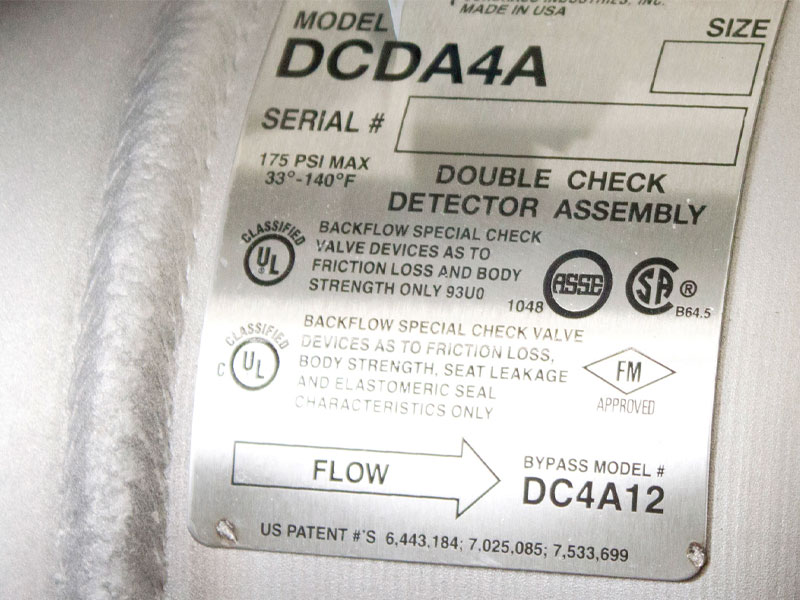My colleague Terry Burger has written about the relationship between codes and standards. The goal of this article is to help people understand what is needed to ultimately achieve the goal of having products certified to performance standards.
It is helpful to discuss some of the terms used and how they relate to having a product certified. Product certification requires products to be tested and evaluated to a performance standard. For the purpose of this article, we will discuss certification of products to standards that were developed though the ANSI consensus process. ANSI is the acronym for the American National Standards Institute. While ANSI does not develop standards, it is the accreditation body that oversees the procedures of standard-setting organizations like ASSE International’s Standards Development department. There are several articles that talk about the details of the ANSI process, but in short, the process requires consensus, due process, transparency, and openness.
So once a performance standard has been developed through the ANSI-accredited process, what next? Often, a manufacturer’s goal is to have its products certified to the aforementioned performance standard(s). According to the U.S. Department of Commerce, up to 93% of global trade is impacted by standards and technical regulations, so it is not hard to see why certification is widely sought and often required. This is where a certification body such as ASSE’s Product Listing Program (PLP) enters the process.
ASSE’s PLP is an ANAB-accredited certification body. ANAB is the ANSI National Accreditation Board and is the accreditor for certification bodies in the United States. This relationship is similar to how ANSI is the accreditor for American standards developers. Each requires the accredited program be audited regularly to ensure it is following the respected procedures faithfully.
At ASSE, the product certification process starts with the client/applicant [hereafter referred to as listee] filling out an application/ contract that covers the terms of the desired certification. ASSE will ask the listee to provide all materials required for certification. This will include, but is not limited to, test reports, drawings, spec sheets, installation instructions, how the ASSE mark is to be displayed on the product/packaging, proof that toxicity requirements are met (if required), etc. During this initial phase, the staff at ASSE will evaluate the scope of the requested certification. One of the most common topics discussed is how many permutations of testing will be required to cover all the various samples seeking certification. This is commonly referred to as “bracketing.”
A required component of the certification process is to have the product(s) tested to the requirements of the selected performance standard. Once the bracketing scheme has been approved, the listee will contact one of the ASSE-recognized laboratories for a testing quote. ASSE will coordinate with the lab to ensure all the certification testing requirements are performed.
Assuming all testing requirements have successfully been met, submitted material will be organized by the evaluator (an ASSE staff member) assigned to the project. This individual is responsible for gathering all required documentation needed to proceed with the certification process. If the listee is seeking a new certification to an ASSE standard, this information is submitted to the ASSE Seal Control Board (SCB) for its approval. The SCB is responsible for maintaining the integrity of the ASSE seal. It is an integral part of the Product Listing Program and demonstrates expert knowledge of ASSE Standards. Once the application has successfully made it through the process, it must still be signed off on by another ASSE staff member. This individual is referred to as the “reviewer” (as defined by ISO 17065) and is the ultimate decider on whether certification is granted or not.
Before certification is granted, an initial audit of each manufacturing facility must be performed by an independent inspection agency operating in compliance with ISO 17020.
So, let’s review: we have products tested to performance standards written under the ANSI process, then tested at an ASSE-approved lab, and finally approved for certification by ASSE staff following the requirements of the ANAB accreditation, in accordance with the requirements of ISO 17065. Along with the successful initial audit, this completes the certification process, right? Not quite. The final part of the certification process is ongoing continuous compliance (CC). This requires the manufacturing facility to be audited, as well as each listing file to be reviewed, annually. The final part of the CC process is to have random samples from each listing selected every five years to ensure the product being produced still meets the requirements of the performance standard.
While it can be a bit overwhelming to understand all the various terminologies, requirements, and actions required for certification, ASSE staff is available to answer any questions you might have. Should you have any questions or would like to start the certification process, you can contact the ASSE Product Listing Program team at listingcoordinator@asse-plumbing.org.

Christopher White
Last modified: September 3, 2024

